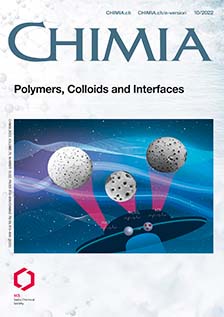(Anti)viral Material Design Guided by Scattering Methods
DOI:
https://doi.org/10.2533/chimia.2022.846PMID:
38069697Keywords:
Antiviral materials, cryo-TEM, DLS, Scattering methods, SANS, SAXS, Virus-based material, Virus self-assemblyAbstract
Viruses are nature’s own nanoparticles that are highly symmetric and monodisperse in size and shape with well-defined surface chemistry. They have evolved for optimal cell interactions, genetic information delivery and replication by the host cell over millions of years. These features render them into very efficient pathogens that place a severe burden onto the health of our society. At the same time, they are highly interesting objects for colloidal studies and building blocks for advanced bio-inspired materials for health applications. Their characterisation requires sophisticated experimental techniques such as scattering of X-rays, neutrons, and light to probe structures and interactions from the nanometre to the micrometre length-scale in solution. This contribution summarizes the recent progress in the field of virus self-assembly and virus-based biopolymer composites for advanced material design. It discusses the advances and highlights some of the challenges in the characterization of structure and dynamics in these materials with a focus on scattering techniques. It further demonstrates selected applications in the field of food and water purification.
Funding data
Downloads
Published
Issue
Section
License
Copyright (c) 2022 Samuel Watts, Bettina Tran, Stefan Salentinig

This work is licensed under a Creative Commons Attribution 4.0 International License.







